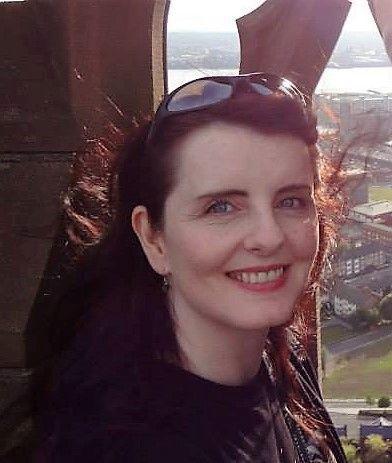Bradford Archaeology Expert Gives Medieval Women and Children a Voice

A bioarchaeology expert from the University of Bradford is poised to discover the secrets of medieval women and children, with new research funded by the university.
Shirley Curtis-Summers, Assistant Professor in Archaeological and Forensic Sciences will be travelling to two sites in Scotland - Whithorn in the south-west and Portmahomack in the north-east. As part of her Ties That Bind research project, in collaboration with the Whithorn Trust, and the Tarbat Historic Trust, Dr Curtis-Summers will conduct analysis on the bones and teeth of medieval women and children. The research will focus on the relationship between maternal-child diet and health, searching for evidence that suggests periods of poor maternal health impacted that of the child.

Dr Shirley Curtis-Summers
Shirley said: “There’s a lot of primary evidence that we can glean from archaeology that we can’t from the pages of history, particularly concerning everyday women and children. Historical texts often focused on the elite and although these can be important sources of information, analysis from the skeletons from Whithorn and Portmahomack will be hugely informative about the lives of non-elite women and children.
“We know about medieval Scottish male warriors, clan members, saints, kings etc., but what about the women and children? What was their diet and health like? Why was infant mortality high during the medieval period? How did women from the lower echelons of society cope with pregnancy, child-rearing, and maintaining the health of themselves and their children? These are important questions we need to be asking and we need to investigate the factors that influenced poor health in the past. Thanks to National Museums Scotland and Dumfries and Galloway Council for allowing me access to research these fantastic skeletal collections, we can now begin to answer these questions.
“The Ties That Bind project aims to give voices to these women and children who are largely absent from the pages of history. With archaeological science, we have powerful tools at our fingertips to reconstruct the lives of these people and bring their stories to life.”
Some of the skeletons Dr Curtis-Summers will be analysing are identified from aDNA and archaeological evidence as mother-child burials. Obstetric burials for example, where the child is still within the pelvis of the mother who died before giving birth, which is a rare find in archaeological record. Shirley said: “These skeletons can help give us a direct indication of mother-child health relationships, enabling us to investigate indicators of poor diet, health, and physiological stress.
“I’ll also be engaging with local communities at Whithorn and Portmahomack by running public engagement workshops, to understand what their perspectives are, and hopefully, to learn from them about family traditions, and local folklore passed down through generations. This will hopefully give us an insight into the social influences on mother-child health in these communities and potentially have future impact on positive health outcomes.”
The School of Archaeological and Forensic Sciences were presented with a coveted Queen's Anniversary Prize in 2021 for their world-leading work in developing archaeological technology and techniques. In collaboration with The Whithorn Trust, Dr Curtis-Summers and Dr Adrian Evans from the University of Bradford have selected key medieval people from Whithorn and produced 3D scans. These have resulted inastonishing digital facial reconstructions by Dr Chris Rynn, which brings us face to face with a 12th to 14th century female, two Bishops, and a cleft-lip and palate cleric. These will go on display at the Whithorn Priory and Museum.
The burials at both Whithorn and Portmahomack are of huge archaeological importance. Whithorn is known as the “cradle of Scottish Christianity”, and Portmahomack is the first Pictish monastery to be excavated. These ecclesiastical places were at the epicentre of Christian life in medieval Scotland, and beyond. Both sites span over 1,000 years, and there’s much still to learn about their past inhabitants. The Ties That Bind project is offering another piece of the puzzle; time will tell what secrets the women and children will reveal.
Dr Curtis-Summers will be giving an online lecture for History Scotland on the 18th July 2023, and later this year at the Wigtown Book Festival.
Main image: Artists impression of Whithorn Priory in the 1500s, by David Simon
